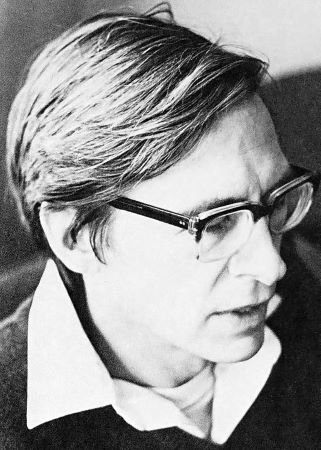John Rawls Theory Of Justice Summary: John Rawls’ theory of justice is a seminal work in political philosophy that has significantly influenced the field since its publication in 1971.
The theory, outlined in Rawls’ book “A Theory of Justice,” is a comprehensive and systematic account of justice that has been widely discussed and debated in academic circles and beyond.
This article aims to provide a detailed summary of Rawls’ theory of justice, including its key concepts, arguments, and implications, with the goal of making it accessible to a wide range of readers, from students to academics to the general public.
Key Concepts
The Original Position
At the heart of Rawls’ theory is the concept of the “original position,” a thought experiment that imagines a group of people choosing the principles of justice that will govern their society from behind a veil of ignorance.
This veil of ignorance ensures that the participants in the original position are not aware of their own social position, such as their wealth, class, or natural abilities.
This is meant to ensure that the principles chosen are fair and impartial, as they would be chosen by individuals who do not know what their own position in society will be.

The Two Principles of Justice
Rawls argues that, in the original position, individuals would choose two principles of justice:
- The first principle of justice states that each person is to have an equal right to the most extensive basic liberty compatible with a similar system of liberty for all. This principle emphasizes the importance of individual freedom and the right to participate in the political process.
- The second principle of justice states that social and economic inequalities are to be arranged so that they are both (a) to the greatest benefit of the least advantaged and (b) attached to offices and positions open to all under conditions of fair equality of opportunity. This principle acknowledges the existence of inequalities but requires that they be structured in a way that benefits the least advantaged members of society and that opportunities for advancement are open to all.
The Difference Principle
The second principle of justice includes a specific principle known as the “difference principle.” This principle states that inequalities in the distribution of wealth and income are acceptable only if they work to the advantage of the least advantaged members of society.
In other words, the distribution of resources should be structured in a way that benefits the least well-off members of society.
The Veil of Ignorance
The veil of ignorance is a key component of Rawls’ theory, as it ensures that the principles of justice are chosen in a fair and impartial manner.
By not knowing their own social position, individuals in the original position are forced to consider the interests of all members of society, rather than just their own.
This is meant to prevent the principles of justice from being skewed in favor of any particular group or class.
The Stability of the Just Society
Rawls argues that a just society, one that is governed by the principles of justice chosen in the original position, will be stable over time. This is because individuals in such a society will have a sense of fairness and justice, and will be willing to support the institutions and practices that uphold these principles.
The Role of the State
Rawls sees the state as playing a crucial role in maintaining a just society. The state should be responsible for ensuring that the principles of justice are upheld and that the basic liberties of individuals are protected.
The state should also work to reduce inequalities and promote fair equality of opportunity.
The Idea of the Overlapping Consensus
Rawls argues that his theory of justice is not based on any particular religious or philosophical belief system, but rather on a set of principles that can be agreed upon by people from a wide range of backgrounds and beliefs.
This idea of an “overlapping consensus” suggests that people from different religious, philosophical, and moral traditions can agree on the principles of justice, even if they do not agree on the underlying reasons for those principles.
Criticisms and Controversies
Rawls’ theory of justice has been subject to a wide range of criticisms and controversies. Some of the key criticisms include:
- The veil of ignorance: Some critics argue that the veil of ignorance is unrealistic and that it is impossible for individuals to make decisions without knowing their own social position.
- The priority of liberty: Some argue that Rawls places too much emphasis on individual liberty and not enough on other values, such as equality or community.
- The difference principle: Critics argue that the difference principle is too demanding and that it would lead to a society that is overly concerned with the interests of the least advantaged members at the expense of other groups.
- The role of the state: Some argue that Rawls’ view of the state is too strong and that it would lead to an overly powerful and intrusive government.
- The idea of an overlapping consensus: Some argue that Rawls’ idea of an overlapping consensus is too optimistic and that it is unlikely that people from different backgrounds and beliefs will agree on the principles of justice.
Implications and Applications
Rawls’ theory of justice has had a significant impact on political philosophy and has been applied in a wide range of contexts. Some of the key implications and applications of the theory include:
- Public policy: Rawls’ theory has been used to inform public policy debates, particularly around issues of inequality and social justice.
- Education: Rawls’ ideas have been applied to educational policy, with a focus on ensuring fair equality of opportunity for all students.
- International relations: Rawls’ theory has been used to inform discussions about global justice and the distribution of resources and opportunities across nations.
- Social movements: Rawls’ ideas have been used to inform the goals and strategies of social movements, particularly those focused on issues of social justice and equality.
- Philosophical debates: Rawls’ theory has been a central topic of debate in academic circles, with philosophers and political theorists discussing and refining his ideas.
Conclusion
John Rawls’ theory of justice is a complex and nuanced work that has had a profound impact on political philosophy and public policy.
The theory is based on a set of principles that are meant to ensure fairness and justice in society, and it has been subject to a wide range of criticisms and debates.
Despite these controversies, Rawls’ theory remains a central point of reference for those interested in issues of justice and equality, and its implications continue to be felt in a wide range of contexts.
RELATED POSTS:
10 Best Stoicism Apps For Mindfulness, Meditation, Daily Quotes, And Journaling
